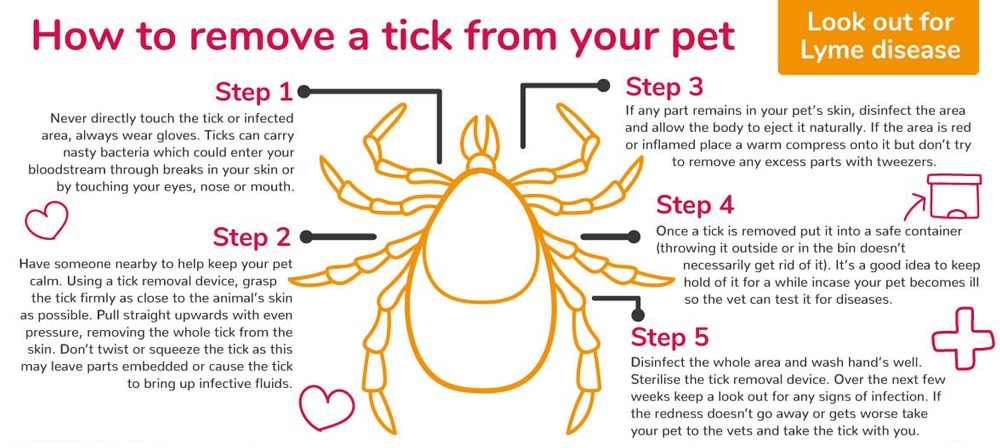How to remove a tick from your pet
Ticks are nasty little critters. They are carriers of diseases such as Lyme disease and they can pass this onto your furry best friend (or you!) as they feed. Here is everything you need to know about Lyme disease and removing a tick from your pet.
Lyme disease
Lyme disease is a serious condition and can be fatal if left untreated. It’s caused by a nasty bacterium called Borrelia burgdorferi and can affect dogs, humans and, less frequently, our feline friends too. Ticks can become carriers of this disease after feeding on the blood of infected wildlife, which act as a reservoir for this infection.
Early symptoms of Lyme disease in people mimic the flu and often includes a red ‘bull’s-eye’ rash.
In dogs, Lyme disease doesn’t present itself in the same way and the early signs can not be so easy to spot. Signs you will be looking for include fatigue, loss of appetite, fever, swollen joints and sometimes lameness.
It’s important to know how to remove a tick from your pet should you discover one on your dog or cat.

How to safely remove a tick
There are some good products on the market designed specifically for safe tick removal. Ask your vet for further details on how to remove a tick and which product would be best for you and your pet.
Step 1
Once a tick is removed it needs to be put in a safe container so have one to hand. Throwing it in the bin or outside doesn’t necessarily get rid of it permanently, so it’s a good idea to keep hold of it for a while in case your pet becomes ill from the bite. If this happens, take the tick to the vet who may be able to test for diseases.
Step 2
You should never have direct contact with the tick or your pet’s bitten area so use rubber gloves when you remove a tick and treat your pet’s skin. Ticks can carry nasty bacteria that could enter your bloodstream through breaks in your skin or by touching your eyes, nostrils or mouth.
Step 3
Just as it’s not pleasant for you to remove the tick, it’s not a nice procedure for your pet either. If possible, have someone else help keep your pet still and calm until you’re finished.
Step 4
Using a tick removal device, grasp the tick firmly as close to the animal’s skin as possible. Pull straight upwards with even pressure, removing the whole tick from the skin. Quickly place the tick in your container.
Don’t twist or squeeze the tick as this may leave parts embedded in your pet or cause the tick to bring up infective fluids.
If any part of the tick remains in your pet’s skin, it’s best to disinfect it and allow the body to eject it naturally. If the area appears red or inflamed, a warm compress might quicken this process, but don’t attempt to remove it with tweezers.
Step 5
Thoroughly disinfect the bite and surrounding areas of your pet’s skin and wash your hands with soap and water (even though you’re wearing gloves). You also need to sterilise the tick removal device.
Step 6
Over the next few weeks, look out for any signs of infection. If the redness doesn’t go away, or gets worse, please take your pet – and the tick – to your vet for testing.

Looking for pet insurance?
As always, it’s wise to have a pet insurance policy in place just in case of unexpected illness as a result of a tick biting your cat or dog.
You might also be interested in…
Get a quote in minutes…

Existing customers
Call now on 0808 164 7999
to discuss your policy with us.
Monday - Friday: 08:00 - 20:00 Saturday: 09:00 - 14:00





 Back
Back
